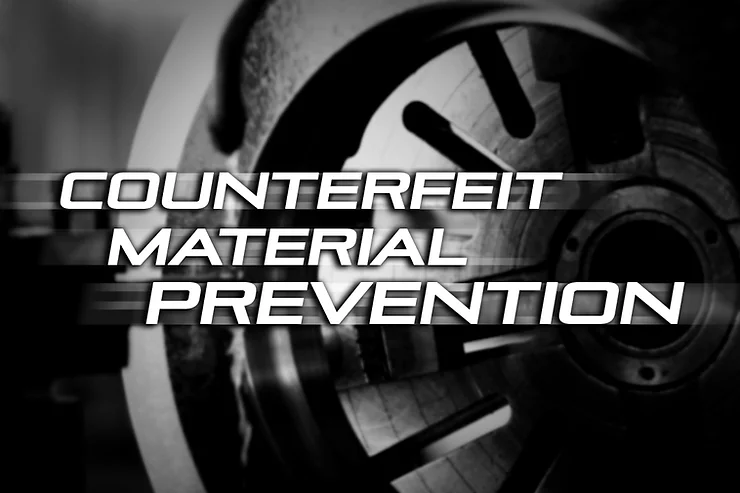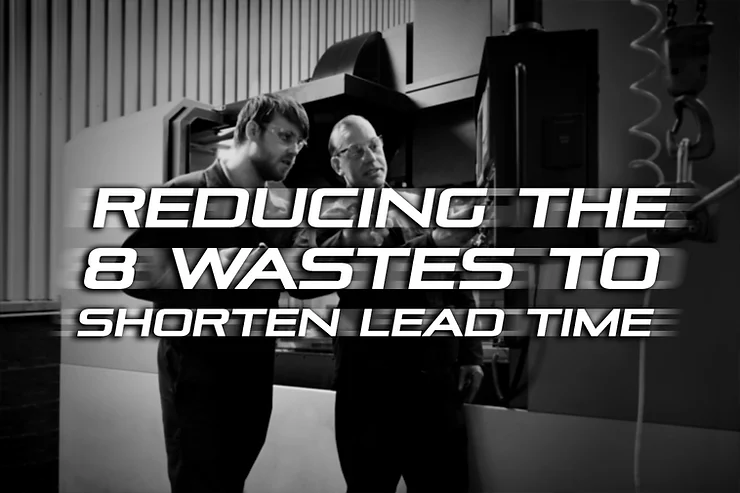Counterfeit Material Prevention

Maintaining the integrity of supply chains so that products perform as intended every time.
1. Introduction.
The unapproved version or the counterfeit products been changed, recognized, or claimed by a supplier other than the legally authorized one are known as Counterfeit products. Sometimes, these unapproved items are also falsified as the original products. The supply chain gets a serious threat due to counterfeit products, resulting in catastrophic results. The original product tends to be always superior to the counterfeit product. The low quality of the counterfeit products becomes visible in the initial system trial and the lessened system life.
The potential outcomes might involve:
-
Amount to diminish this threat
-
Amount to recover broken items
-
Lost sales
-
The worsening of business identity
The prevention of counterfeit products in the supply chain for maintaining the ethics of the supply chain is discussed below. Moreover, the ways to overcome the possible risks are also discussed below.
2. Risk-Based Approach.
The organization implements a risk-based approach to identify and prevent the introduction of a product that is at high risk of counterfeiting. It also directs the organization to apply preventative measures, early detection processes, strengthened surveillance procedures, and accountable oversight commensurate with the end-use application of the product in the system or its criticality, and to ensure all instances of counterfeit product or suspect counterfeit products are reported.
3. Risk Assessment.
It is important to supply chain management. In today’s complex and global business environment organizations face many supplies chain risks. Most of them include counterfeit products. To avoid risks and have better protection against counterfeit products, a systematic business process should be put in place. This process contains four specific components that are discussed here.
-
Impact. The reasons behind a material being counterfeit include surprising behavior, reduced reliability, and functionality declined interoperability, and targeted malicious attack.
-
Likelihood. The products bought from the vendor can be counterfeited. The products which are not available from a supplier who is trustworthy may be counterfeited.
-
Supplier risk. There is a strong likelihood of acquiring a counterfeit product if the supplier is not trustworthy. There can be other factors like supply class or purchase price but still, there are high chances that purchasing from an untrusted supplier will surely get you with a counterfeit product.
To achieve a better supply chain security, the product will be categorized by weighting the probability, and then it should be given a rate based on the probability and probability should be given a rating based on supplier type.
4. Supply chain management.
Supply chain management can be the first step to prevent counterfeiting the product. The organization that enters the supply chain should have a method to identify, react to, and recoup from counterfeit products. This will then put the organization in a better position to regain. Counterfeit products are sometimes introduced in the markets after the original manufacturer sells exits the product in the market and before selling the product in the market, the vendor can introduce the counterfeited products. In the above-mentioned example, the supply chain is corrected by means of the contract between the brand owner and the contractor. By doing this, the quality of the supply chain can be enhanced in the company.
5. Information sharing.
When an incident is related to supply-chain security like counterfeit products, the information provided by the trusted suppliers can help and be used in defense. The flow of information is key in detecting any possible disruptions within a supply chain because, typically, communication travels much faster than the flow of products. This sharing of information among the members also develops mutual trust that can help reduce risks within a supply chain.
6. Threat Evaluation.
The threat evaluation plays a significant role in managing the supply chain. Researching counterfeit products is the most common supply chain threat nowadays. The supply chain security and the prevention of assumed products should be ensured by maintaining the structured business procedure. This process has four elements which are given below.
-
Effect. The counterfeit products bring possible outcomes like lessened capability and targeted malicious attacks.
-
Probability. Some vendors provide all counterfeited products. The outdated or hard to import products that a trustworthy vendor does not provide can also be counterfeited.
-
Retailer risk. The trustworthiness of the retailer serves as the basis of material being original or counterfeited. The acquirement of products from an untrusted seller can result in counterfeiting products aside from the supply chain, buying cost, and other possible factors.
Rating the vendor and the provided products can improve the quality of the supply chain. For instance, an outdated product is difficult to bring. It has a high rating. Thus the classification of the products helps prevent the purchasing of counterfeit products.
7. Vendor’s selection and purchase.
The material should always be obtained from the authentic and the original manufacturer to enhance the quality of the supply chain. The threat of counterfeit products is less in the case of authentic vendors. However, the threat can be mitigated if the original manufacturer obtains the product. If the only option is the unauthentic vendor, then the vendor should give some criteria before choosing it.
An individual should completely research the unauthentic vendors to ensure that the product has passed the criteria of anti-counterfeit. They should pay the cost to the vendor after the authenticity check, and in case the product is counterfeit, it should never give it back.
The contract must have the particulars which increase the supply chain security by lessening the threats of buying counterfeit products. The elements are given below.
-
The authentic vendor should supplicate the material if the product is under development.
-
The product can be purchased from a vendor meeting the anti-counterfeit criteria if the product is not under development or available.
-
The contractor should check that the high-risk products cannot be purchased from any unauthentic vendor.
-
If the product is purchased from an unauthentic vendor, the contractor should take steps to lessen the risk of counterfeiting material.
8. Counterfeit product disclosure.
The inspection of every product bought from an unauthentic buyer should be done to check the product’s originality. The initial level inspection tools, which include the verification of the consistency in the papers and checking the products and their packaging visually, should be done before receiving any product from any vendor.
Before placing a high-risk material in an organization’s supply chain, it is necessary to apply counterfeit detection techniques to check the authenticity of the product. The steps taken in the detection of counterfeit products are given below.
-
Paperwork Check. The paperwork should be keenly checked in order to catch suspicious activity. The doubtful stats include the wrong logos, flawed barcodes, incorrect grammar, misspelled words, etc. The paperwork of the previously received same product can be the basis of the doubtful paperwork.
-
Products Examination. After checking the paperwork, the product should be checked to get the suspicious indicators. Sometimes, strong indications (including mixing internal designs and non-magnetic materials attracted to a magnet) counterfeit a product. In contrast, other indications (including scratches, torn packaging, etc.) can be the outcomes of processing, shipment, and other work, which can turn out to be counterfeit indications but not in all cases.
Counterfeit detection techniques cannot guarantee the authenticity of the material. The highly critical electronic parts or the material having greater counterfeiting threats can be checked through additional tests. These tests include the relative analysis of the primary electrical responses or the functional electrical test. The evaluative properties of the product serve as the basis in the tests for the detection of counterfeited mechanical parts. The conventional methods of detecting counterfeit products sometimes become unable to distinguish the tampered elements of the product. To eliminate the threats regarding the malicious hardware designs, changing or code insertion for analytic hardware, it is necessary to construct and initiate a process.
9. Supply Chain Security.
A survey depicts that the bond made between the manufacturers and the vendors by the means of the legal agreements and other business processes for the enhancement in the quality of supply chain security. This enhances the understanding between the two parties i.e., the brand owner and the supplier. The first step of supply chain security is to ensure that your organization’s security understands and that your senior management knows about the risks connected with counterfeit products. The next step is to plan a strategy to maximize supply chain security and the accessibility of qualified, genuine, and originally designed products. It is important to train your employees who interact with customers, suppliers, and the product, and they should know what to do when encountering a counterfeit product. Also, distinguish that counterfeit products are difficult to identify without any alternative testing. On the other hand, a successful organization should have a policy that can explain the process for reporting, examining, and taking actions to protect the reliability of their materials. These are the following requirements and controls an organization should apply to safeguard its supply chains.
-
They should travel to the contractor’s place to verify the counterfeit items.
-
Give clear instructions of where and to whom the contractor should deliver the counterfeit products supporting the data package.
-
The suspected counterfeit items should be given an independent analysis.
-
The suppliers who continuously meet your preferences and security recognize them.
-
You should know your important assets and identify the suppliers you over-rely. So, you can build further diversity and dismissal into your planning.
-
The requirements for security should be set that can be achieved and are justified and fair.
-
make sure the requirements you set for assessing the security risks should take account of your supplier’s security arrangements and their capability to deliver the requirements you are implementing for them.
-
In some circumstances where the expected suppliers cannot meet your security requirements, you should minimize the requirements according to it.
-
All these suggestions, you should consider and document to guide how you intend to manage all the engagements. By doing this, the workload will be reduced, which will help you decrease any additional unnecessary work.
10. Counterfeit product precautions.
The counterfeit products can be lessened by the implementation of strategies in the following categories:
Supply chain security, the elimination of the production of counterfeit products, dispersal obstruction, and supply chain management. The technological, organizational, communicative, and legal measures are necessary to be implemented to attain the correlating targets. The steps are given below.
-
Organizational precautionary steps. Organizations must look upon the risks of purchasing counterfeit products to maintain supply chain security. Therefore, it is necessary to choose the vendors and contractors for this process analytically. Moreover, it is necessary to carefully consider the threats forced by the counterfeited products in the original products during the procurement of the products for the organizations. Most commonly, in the case mentioned above, the technologies used for anti-counterfeit fail to detect the tampered parts in a product. This is why the anti-counterfeit inspection is necessary for the audit process, and therefore the creators have to build faith in their vendors. The problem awareness is still questioned even if the vendor is famous and trustworthy. It is necessary to keep a strict check on the supply chain management procedure to restrict the distribution of imitations. Good management of the supply chain network helps control the spread of counterfeit products in the markets.
-
Technological precautionary steps. To remove the counterfeit products in the supply chain, the technological precautionary steps serve an important part. By taking these steps, the genuine material is differentiated from the counterfeit products, and hence they serve basis to authenticate the products. For some detailed categories, the enhancement in the production cost can also become useful to differentiate the authentic products from the counterfeited products or the fake material. Micro paintings, flip colors, and holograms are significant precautionary steps. A new technology, RFID (Radio Frequency Identification), also helps strengthen the quality of the supply chain performance and security.
-
Legal Protection. Legal protection serves as a necessary base for preventing the production of counterfeit products, but it is still not a sufficient means to control this action. To ban the development and the sales of counterfeit products, immediate and comprehensive registration of trademarks is an important means. To overcome the future damage caused by counterfeit manufacturers, the civil and law enforcement institutes are good to be approached.
-
Procedure management. To detect, recover, or respond to counterfeit products, a company must contain a process to implement. By following this, the counterfeited products will not be entered in the supply chain.
11. Containment, Disposition, and Reporting.
In a situation regarding the counterfeit product where supply chain security is compromised, steps of containment, disposition, and reporting are taken.
a. Containment. When a suspect counterfeit item is seized, all the other products of the same date code and a lot are also stopped. These items also include uninstalled material, any material installed into hardware and any finished or in-process constructions, and the products on their way to the customer for any further handling. Some steps include Mitigation.
-
When you suspect, do notify the program office and contracting officer.
-
Identify the counterfeit material.
-
Mark the package and secure the material to know it is a suspected counterfeit.
-
Make sure it doesn’t enter the supply chain. ·
-
Confiscateall the suspected counterfeit items and start with the legal process.
b. Dispositions. Without the contracting officer’s approval or the authorities, the suspected counterfeit products should be left as it is. There should be more information, and upon request, the material should be given for further investigation. The counterfeit product should not be returned to the supplier, so it cannot be reused or resale in any way. The material should be destroyed when released by the approval of the cognizant program office or legal authorities to avoid it coming back into the supply chain. Certain methods should be applied in destroying the material but are not restricted to crushing or shredding small electronics and drilling, which will violate the pressure boundary. It can have a performance risk, the counterfeit material, which is impossible to quantify since it may have been exposed to unquantified stresses that can be thermal, electrical, chemical, mechanical, etc., or it cannot function properly to its shown potential. Due to this, counterfeit products should be replaced and removed.
c. Reporting. All the higher command and users should be acknowledged of any incidence of suspected counterfeit material. This type of incident should be reported in PDREP (Product Data Reporting and Evaluation Program) using a PQDR(Product Quality Deficiency Reports). If the investigating authorities don’t stop, then within 60 days, reports should be filed with GIDDEP (Government-Industry Data Exchange Program).
12. Suggestions.
To prevent counterfeit material in the supply chain, the companies must keep in focus the following suggestions.
-
A complete threat-eliminating process in the company.
-
The improvement in the reporting of counterfeit products in the industry. Awareness regarding the production, distribution, and control of counterfeit parts and detection pieces of training is recommended.
-
The Government-Industry Data Exchange Program (GIDEP) process, which the government should strengthen, includes an act that will limit the liability of those accurately reporting counterfeit products using the GIDEP.
13. Conclusion.
Counterfeiting refers to a huge crime affecting the industrial scale that lessens the profits. The public gets exposed to the possible safety risks about the product’s reliability. To combat the counterfeit industry, the companies should work collectively. It will benefit the whole industry. A critical approach and zero-tolerance for the counterfeited material will eventually help the companies protect themselves from counterfeit products and terminate their distribution.
Reference
-
Byrne, PM (2007). “Mastering Supply Chain Security”. Logistics Management 46: 25.
-
Casabona, Liza (2006). “Supply Chain a Key in Counterfeit Battle”. Women’s Wear Daily 192: 9.
-
Department of Defense Instruction (DODI) No. 4140.67, “DOD Counterfeit Prevention Policy, http://www.dtic.mil/ whs/directives/corres/pdf/414067p.pd
-
Janice Meraglia and Mitchell Miller, (2014). SAE, Counterfeiting, Supply Chain Security, and the Cyber Threat; Why Defending Against Counterfeit Electronics is No Longer Enough
-
Lockhead Martin, (2019). Counterfeit Materials Prevention https://www.lockheedmartin.com/content/dam/lockheedmartin/eo/documents/suppliers/rms/rms-quality-counterfeit.pdf
-
Andrew R. Thomas, Sebastian Vaduva, Global Supply Chain Security Emerging Topics in Research, Practice and Policy
-
Ken Sigler, Dan Shoemaker, Anne Kohnke. Supply Chain Risk Management Applying Secure Acquisition Principles to Ensure a Trusted Technology




